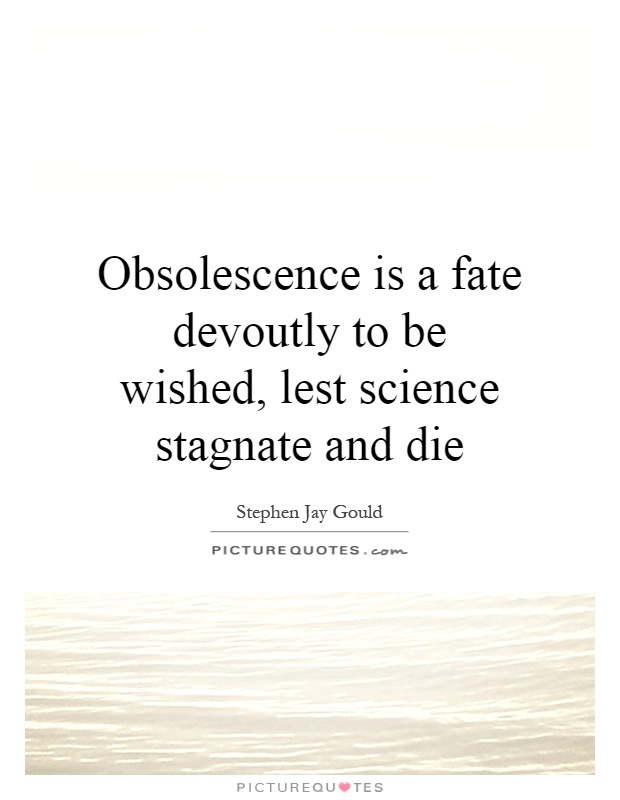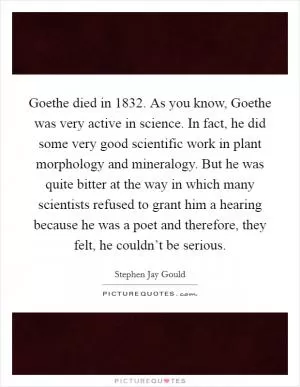Obsolescence is a fate devoutly to be wished, lest science stagnate and die

Obsolescence is a fate devoutly to be wished, lest science stagnate and die
Stephen Jay Gould, a renowned paleontologist, evolutionary biologist, and science historian, was a firm believer in the concept of obsolescence in science. He argued that obsolescence is a necessary and even desirable aspect of scientific progress, as it allows for new ideas and theories to emerge, pushing the boundaries of knowledge and preventing stagnation.Gould believed that the process of obsolescence in science is essential for the advancement of knowledge. He argued that if scientific ideas and theories were never allowed to become obsolete, then science would become stagnant and eventually die. In his view, the constant questioning and reevaluation of existing theories is what drives scientific progress and leads to new discoveries.
One of Gould's most famous works, "The Structure of Evolutionary Theory," explores the concept of obsolescence in the context of evolutionary biology. He argued that the field of evolutionary biology had become stagnant due to the dominance of certain outdated ideas, such as the concept of gradualism and the idea of evolution as a purely deterministic process. Gould believed that by challenging these outdated ideas and embracing new theories, such as punctuated equilibrium and the role of contingency in evolution, scientists could revitalize the field and open up new avenues of research.
Gould's views on obsolescence were not limited to evolutionary biology. He believed that all scientific disciplines could benefit from the process of obsolescence, as it allows for the continual reevaluation and improvement of existing theories. By embracing obsolescence, scientists can avoid becoming entrenched in dogma and open themselves up to new ideas and perspectives.












 Friendship Quotes
Friendship Quotes Love Quotes
Love Quotes Life Quotes
Life Quotes Funny Quotes
Funny Quotes Motivational Quotes
Motivational Quotes Inspirational Quotes
Inspirational Quotes